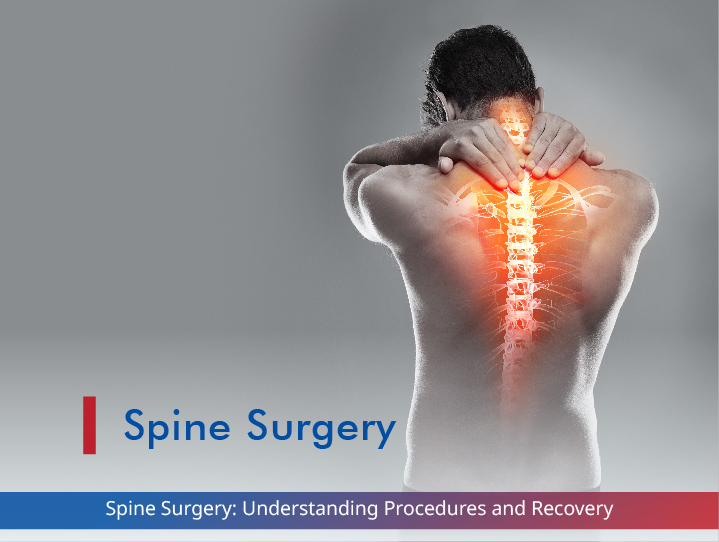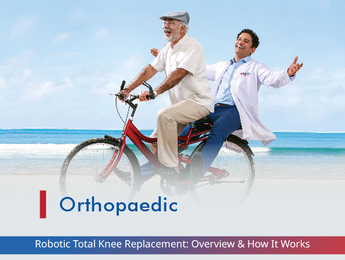Hip joint arthritis is a debilitating condition and can pose challenges for conservative treatment. Hip arthritis can present as groin pain and stiffness leading to difficulties in activities of daily living. Total hip arthroplasty (THA) is the treatment of choice for end stage arthritis of the hip joint. This procedure involves removal of the severely damaged ball and socket joint and substituting it with implants made from metal, ceramic, and specialized wear resistant plastic. These replaced artificial prostheses are biocompatible and function like a normal hip. The main aim of this procedure is to relieve pain and restore function to the hip joint.
Evolution of Robotic Assisted Total Hip Arthroplasty
THA is one of the most successful orthopaedic interventions of its generation. The earliest recorded attempts at hip replacement occurred in Germany in 1891 where ivory was used to replace femoral heads of patients whose hip joints are destroyed due to tuberculosis. In the late 19th and early 20th century, surgeons experimented with interpositional arthroplasty, which involved placing various tissues like skin, fascia lata, pig bladder submucosa between articulating hip surfaces of the arthritic hip. In 1925, the American surgeons demonstrated the first mold arthroplasty which was prepared out of glass which could fit over the femoral head and provide a new smooth surface for movement. In 1953, metal-on-metal prosthesis was used on a regular basis in England which demonstrated good survival rates. Sir John Charnley, who worked at Wrightington Hospital is considered the father of the modern THA. He designed the low friction arthroplasty in the 1960’s which is identical in principle to the prostheses used today.
Ever since, there has been constant evolution in the field of hip surgery. In the 1970s, it was the bearing surfaces, followed by the debate of cemented versus uncemented hip replacement in 1980’s which continues to this day. Newer bearing surfaces including metal-on-metal, ceramic-on-ceramic and resurfacing arthroplasties were introduced in 1990’s aiming to preserve bone stock. In early 2000’s it was focussed on failure of large bearing metal-on-metal hip implants followed by the role of minimally invasive hip arthroplasty and alternative approaches to the hip.
Lately, robotic-assisted surgery has become the new hot topic. Robots are routinely used in many surgical specialties.
Types of Robots for Hip Replacement
In the field of hip surgery, robotic surgery can be passive, active, or semi-active. Passive robots are continuously under the control of the surgeon and complete a task without feedback loops as seen in computer assisted systems. Active robotic hip surgery systems perform the bony preparation for implantation of the components based on predetermined programming. However, semi-active robots require the surgeon’s involvement but have haptic feedback loops which can communicate with the surgeon in real-time. They provide tactile feedback that facilitates the preoperative plan to be implemented. It can be auditory, tactile, and visual or a combination of all.
How Robotic assisted total hip arthroplasty works
Prior to the surgery, 3D-CT scan of the hip joint is obtained which allows perfect planning of the size and position of the implants. These are tailored for the unique anatomy of each patient. During the surgery, the anatomic landmark on the pelvis is correlated with the CT scan generated image. This allows the robotic arm to assist the surgeon in preparing the bone and placing the implants in perfect position, down to a submillimetre in length and degree of accuracy. Surgeons control the robot and make all the decisions intra-operatively.
What does the Robot consist of?
The robotic system consists of a console with robotic arms, a high-performance vision system, and special surgical instruments.
Candidates for robotic joint replacement surgery:
Most patients who are eligible for traditional THA surgery will also benefit from robotic joint replacement surgery.
What does Postoperative Care Include?
Post Operative instructions to aid in the early healing and recovery include:
- Use of assistive devices such as a frame/ splint/ crutches for walking
- Keeping the legs apart and avoid cross over in early postoperative period
- Medications to control pain and swelling
- Weight-bearing activities as pain permits
- Following a balanced diet
- Physical therapy to improve flexibility, range of motion, and strengthen muscles
- Adhering to regular follow-up appointments
What are the Advantages of Robotic Total Hip Replacement?
- Smaller incision: This procedure can be carried out with smaller incisions and less trauma to surrounding tissues. However, it will require 3 keyhole incisions near the pelvis for insertion of arrays (robotic sensors)
- Minimal blood loss: Blood loss in this procedure is reduced because of lesser trauma to surrounding tissues, blood vessels & muscles.
- Reduced postoperative pain: Lesser trauma to soft tissue around the hip joint results in reduction of postoperative pain.
- Shorter hospital stays: Smaller incisions and greater accuracy result in faster recovery and shorter hospital stay.
- Early recovery & quicker return to daily normal activities: The patients are mobilised the same day following this procedure.
- Precise placement of the hip implant: Precision of cup and stem placement with robotic assisted THA reduces the risk of hip dislocation and impingement. The robot helps the surgeon with preparation of the bone as well as insertion of the cup. Trying to implant perfectly positioned components in THA, 100% of the time, in every patient, in a biological environment, with diversity in anatomy and pathology is challenging. Robotic assisted surgery allows surgeons to consistently place the acetabular component in the accurate position as per the requirement of patients’ anatomy as one rule fits all may not apply to hip surgery.
- Restore the limb length and native offset: Robotic THA aims at restoring the native hip prior to beginning of the pathology. As a result, the patients have minimal or no limp after this procedure and don’t notice weakness of hip abductors as the offset is restored.
- Improved safety and reduced risk of injury to adjacent tissues: Because the bone preparation is controlled by haptic and stereotactic boundaries set by the robot, there is reduced risk of injury to adjacent tissues, nerves, and blood vessels around the hip joint.
- Increased longevity of the implant: Accurate implant positioning reduces implant loosening and failure. This results in greater outcomes and increases the life expectancy for the implant.
Current evidence for Robotic assisted Total Hip Arthroplasty
- Operative Time: Time taken for robotic THA is comparable to that of manual THA and is known to decrease with increasing experience of the surgeon.
- Clinical outcomes: The existing literature comparing clinical outcomes of robotic THA and manual THA is scarce due non availability of long-term studies. However clinical outcomes of Robotic THA were better than those of manual THA in short-term studies.
- Radiographic outcomes: Based on the current literature, robotic assisted THA systems provide higher accuracy in terms of acetabular component positioning within safe zones as well as improved femoral stem alignment compared to manual THA.
- Learning curve: The learning curve for robotic assisted THA is around 35 cases to reduce the operating time.
- Cost: In a recent study in America, robotic assisted THA was found to be cost effective relative to manual THA for cumulative costs over a 5-year period.


















